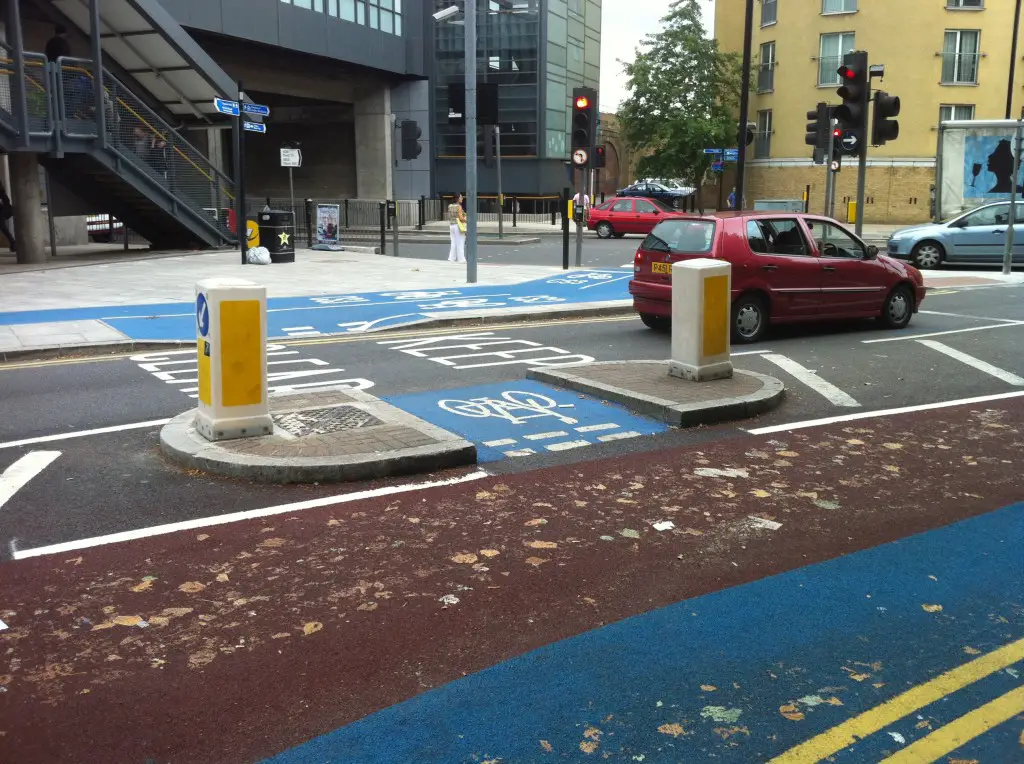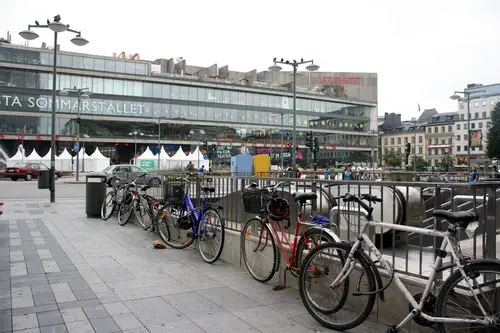If Boris Johnson’s PR office are to be believed, the Mayor of London has some big ambitions. Stating a desire to ‘change the urban landscape of the city’, Johnson has recently launched ‘cycle superhighways’ in an attempt to back up his headline-grabbing goal. Johnson – an avid cyclist himself – knows that London is lagging behind other global cities in integrating the bicycle into its transport network and views these changes as an opportunity to create a ‘cycling revolution’.
And if there’s any city that needs such a revolution, it’s London, where a dismal 2% of all journeys are made on a bike. Compared to European cities like Copenhagen and Amsterdam – who respectively see 32% and 40% of all trips by bike – London clearly has some catching up to do.
Integral to Johnson’s proposed ‘cycling revolution’ are the cycle superhighways – bright blue cycle lanes connecting outer London areas with the city centre. Promoted as safer, faster and more direct routes, the first two of the proposed twelve superhighways have already opened, linking Barking in the East and Merton in the South-West to London’s city centre. Two additional superhighways are expected to be launched every year until 2015.
Both superhighways come in at around 9 miles in length, and are always a minimum of 1.5 metres wide. But whilst widths vary across the route, they are rarely more than three metres wide, meaning space for overtaking is rare and separate lanes for varying speeds are non-existent. If this was a road for cars there would be nothing super about it.
Essentially, the ‘super’ prefix refers to the fact that they are a vast improvement on what came before. London’s current bicycle lanes are narrow and positioned on the road’s edge – roads which are frequently in poor condition. To resolve this issue, the surfaces of the superhighways have been refurbished, creating a smooth, cycle-friendly terrain, and the majority of the route is raised, introducing a separate bicycle-only road in between the pavement and main road.
However, certain sections of the superhighway are not divided from the main road, meaning cyclists still have to risk pedaling alongside automobiles and share space with the vehicles who choose to ignore the blue lanes. This inconsistency further challenges the ‘super’ status of these lanes, confirming that ‘superhighway’ is merely an elaborate brand name, not a description of functionality.
But despite the slightly misplaced confidence in the lanes’ branding, they are still a step in the right direction for London. The predominantly-raised lanes reduce the risk of riding alongside automobiles, and both safety and timeliness are expected to improve.
By introducing these changes, Johnson believes that London will soon see 5% of all journeys being made on a bike, with a more ambitious aim of a 400% increase in ridership by 2025 being quoted by Transport for London (TfL) – the government body responsible for London’s transport system.
But it is the proposed timeline for the launch of the remaining superhighways and TfL’s distant target that demonstrate the major flaw in London’s plans – a real lack of urgency.
One excellent example of successful bicycle integration is Amsterdam. Often cited as the most bicycle-friendly city, Amsterdam has worked hard for over thirty years to achieve mass-ridership. After an increase in car-ownership between 1950 and 1970 threatened their bike-friendly status, the city began taking measures to ensure continued bicycle use, measures which bear a striking resemblance to those now being taken in London with the cycle superhighways.
By introducing an extensive ‘Main Bicycle Network’ between residential districts, employment hubs and the city centre, alongside other improvements such as bicycle-only traffic lights and removal of street clutter near bicycle lanes, Amsterdam was able to grow bicycle ridership to its current levels of 40% from a low of around 20% thirty years earlier.
Of course, other factors come into play in Amsterdam that London could never replicate. The bicycle has a rich history in the Netherlands, and Amsterdam’s small size and level terrain further contribute to its high bicycle use. But if the sheer amount of time required to increase bicycle use in Amsterdam from its 1970s levels is at all reflective of the time required to increase ridership in London, waiting until 2015 to complete the cycle superhighways should not be an option.
However, there is some logic behind London’s decision to soft-launch these superhighways. Unforseen issues will likely arise on the two routes currently in action, and future developments will be able to take this into account. But this should not justify the timeline proposed for the developments.
If Johnson and TfL are serious about their aims to increase ridership, London needs a safe, efficient and comprehensive network of roads for its cyclists – as soon as possible. If integrating the bicycle into London’s transport network is the priority Johnson and TfL are suggesting it to be, we would not be waiting until 2015 to see it begin.



